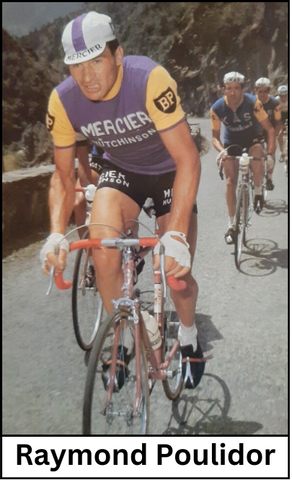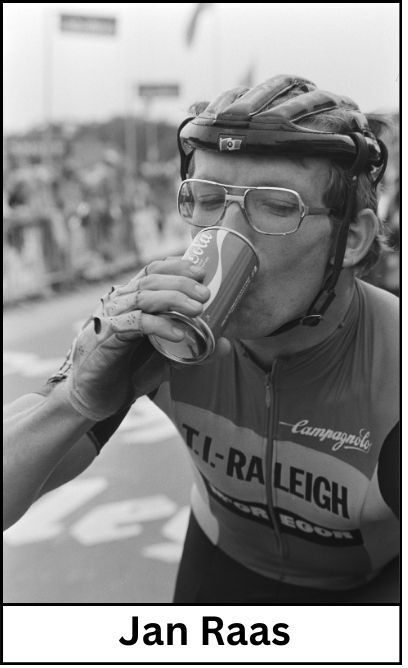
The season has started again! Keep up to date with the upcoming historic classics in this blog and take advantage of special race offers. We define historical classics as; cycling races in the World Tour with a long history (before 1950) and with traditionally a very international field of participants.
- 3 - 10 March: Paris-Nice
The Paris-Nice classic (since 1933), also known as the race to the sun, is run over several days and is the first stage race of the season. The race is mainly a place for all-rounders to excel through its various facets such as climbing and sprinting. Seán Kelly holds the record for most wins with as many as seven in a row.
- Website Paris-Nice.
- Historical winners:
- 16th March: Milan-San Remo
Milan-San Remo - La Primavera (Spring), is one of cycling's five monuments and the longest professional one-day race. The first edition was in 1907. Milan-San Remo is known as a sprint classic: although it is the longest race of the season (c. 300 km), the course along the Ligurian coast is mainly flat, so sprinters often compete for the win. The race is seen as an indicator of riders' form for upcoming classics and stage races.
- Website Milan-San Remo.
- Historical winners:
- Lucien Petit-Breton / Cyrille Van Hauwaert / Gaetano Belloni / Odiel Defraeye / Giuseppe Olmo / Costante Girardengo / Gino Bartali / Óscar Freire / Fausto Coppi / Loretto Petrucci / Miguel Poblet / Rik Van Steenbergen / Raymond Poulidor / Eddy Merckx / Roger De Vlaeminck / Francesco Moser / Laurent Fignon / Seán Kelly / Erik Zabel / Mario Cipollini
Want to watch the classics in a fun retro outfit? Then check out our large collection of retro cycling shirts here.
- 18 - 24 March: Tour of Catalonia
The Tour of Catalonia is one of three World Tour races in Spain. The round is dominated by Spaniards & Catalans. The Spaniards won 61 of the 99 editions ridden. The record for most wins still stands with Mariano Cañardo with 7 victories.
- Website Tour of Catalonia.
- Historical winners:



- 24th March: Gent-Wevelgem
Gent-Wevelgem is normally held in late March or early April. The first edition took place in 1934 and it has been a fixture on the cycling calendar ever since. The course of Gent-Wevelgem is known for its typically Flemish character, with narrow and winding roads, cobbled sections and often windy conditions. The race traditionally begins in the city of Ghent and ends in Wevelgem, hence the name.
- Website Gent-Wevelgem.
- Historical winners:
- 27th March: Across Flanders
Across Flanders is usually run in March, a few days before other major Flemish classics such as the Tour of Flanders. The first edition of the race took place in 1945. The race attracts a mix of sprinters, classical specialists and climbers. Because the race is often seen as preparation for the Tour of Flanders, you often see riders looking to test their form for the main classics later in the season.
- Website Across Flanders.
- Historical winners:
- 31st March: Tour of Flanders
The Tour of Flanders, also known as "De Ronde", is held annually in the spring, usually in April. The first edition of the race took place in 1913 and since then it has become one of the highlights of the cycling season. The course of the Tour of Flanders is notorious for its cobbled sections, short but steep hills and narrow roads. The route passes through picturesque Flemish villages and the hilly landscape of the Flemish Ardennes. Iconic climbs such as the Oude Kwaremont, the Paterberg and the Koppenberg are often crucial in determining the winner.
- Website Tour of Flanders.
- Historical winners:
- 1 - 6 April: Itzulia Basque Country
The Tour of the Basque Country, also known as the "Itzulia Basque Country" in Basque, is a multi-day cycling race held annually in the autonomous region of the Basque Country in Spain. The first edition of the race took place in 1924. The course of the Tour of the Basque Country is varied and challenging, with mountain stages, hilly stages and time trials
- No Website
- Historical winners:
- 7th April: Paris-Roubaix
Paris-Roubaix, "The Hell of the North," is often ridden in the spring. The first edition took place in 1896, one of the oldest cycling races. Paris-Roubaix is known for rough terrain and cobblestones, also called "pavés," by now much of these cobblestones have disappeared under a layer of asphalt. Nowadays, riders have to cycle over some 50 kilometers of cobblestones.
- Website Paris-Roubaix.
- Historical winners:
- 10th April: Brabantse Pijl
The Brabantse Pijl also known as, "The Brabantse Pijl - La Flèche Brabançonne". is a one-day cycling race that takes place annually in the province of Flemish Brabant, Belgium. The first edition of the race took place in 1961. The course features short but steep climbs.
- Website Brabantse Pijl
- Historical winners:
- 17th April: La Flèche Wallonne
The Flèche Wallonne is one of three Ardennes classics, along with Liège-Bastogne-Liège and the Amstel Gold Race, that make up the “Ardennes Week” in spring cycling. The Flèche Wallonne is known for its challenging course with steep climbs, including the infamous Wall of Huy. The Wall of Huy is a short but very steep climb that must be climbed several times during the race. It is often the deciding factor that determines who wins the race. The first edition of the Flèche Wallonne took place in 1936.
- Website La Flèche Wallonne
- Historical winners:
- 21st April: Liège-Bastogne-Liège
Liège-Bastogne-Liège, also known as “La Doyenne,” has been ridden since 1892. It is considered one of the five monuments of cycling, along with the Tour of Flanders, Paris-Roubaix, Milan-San Remo and the Tour of Lombardy. The course runs from Liège to Bastogne and back to Liège, with a total distance of about 250 kilometers.
- Website Liège-Bastogne-Liège
- Historical winners:
- 23 - 28 April: Tour de Romandie
The tour has been held annually since 1947. The Tour de Romandie often serves as an important preparation race for major tours such as the Tour de France, as it gives riders a chance to test and fine-tune their form before embarking on the grand tours. The race features climbs, a prologue and a longer time trial over six days.
- Website Tour de Romandie
- Historical winners:
Are you, like us, a big fan of cycling? Then be sure to keep an eye on our blog. We regularly post new stories about cycling trivia, noteworthy events and updates to our range that are definitely worth reading!














